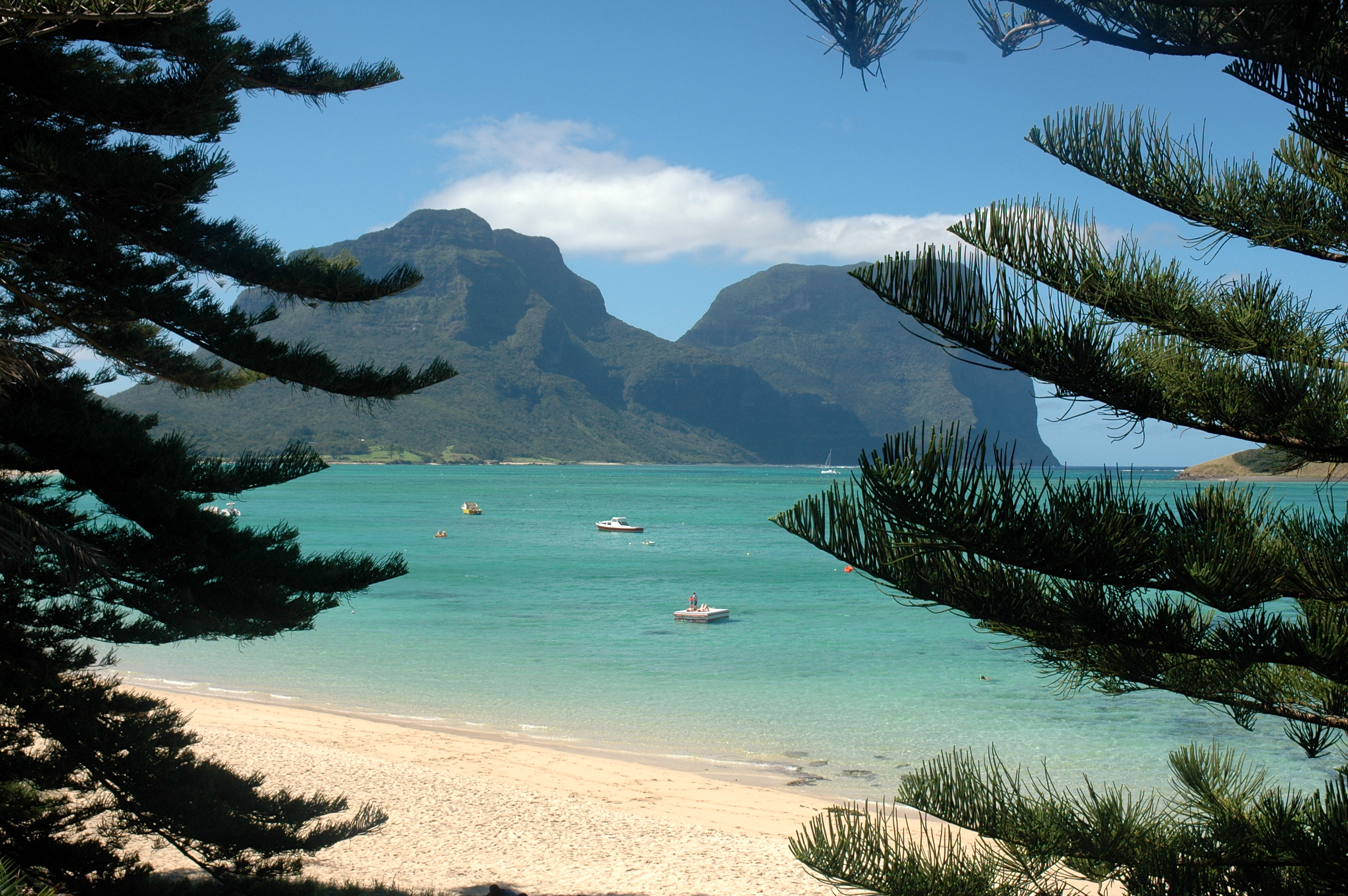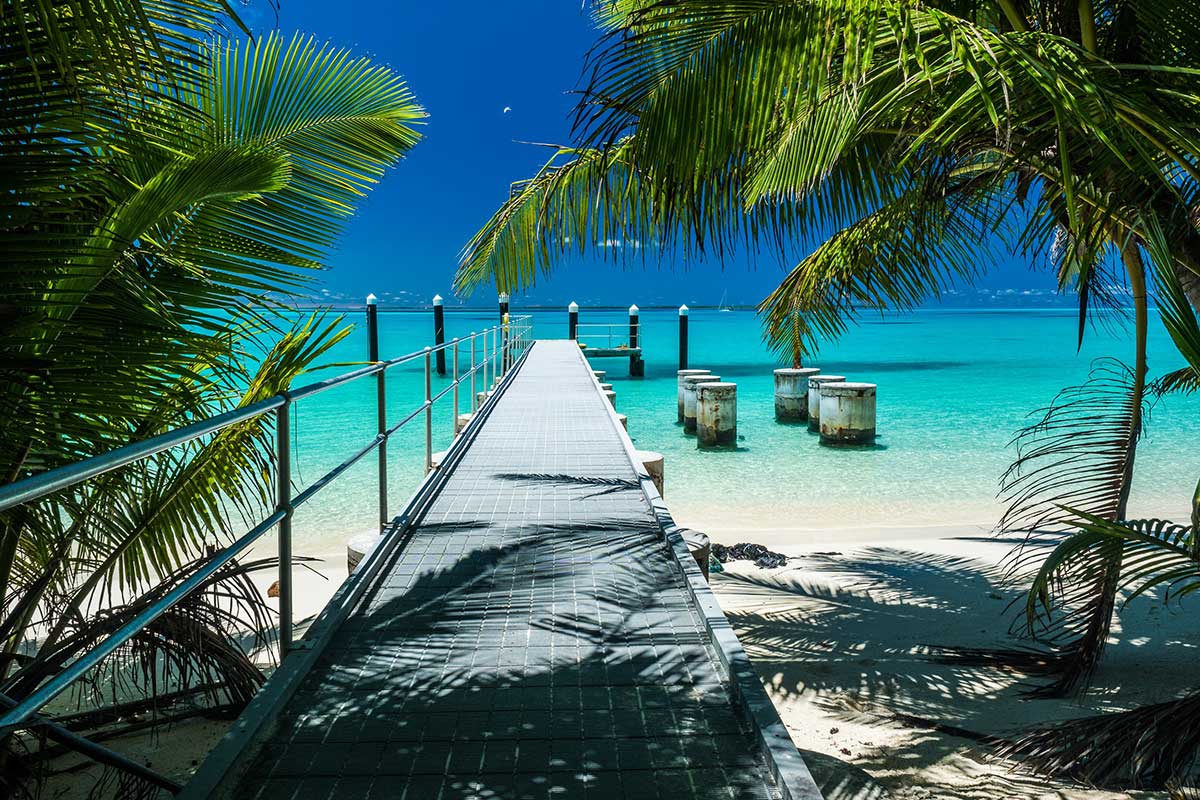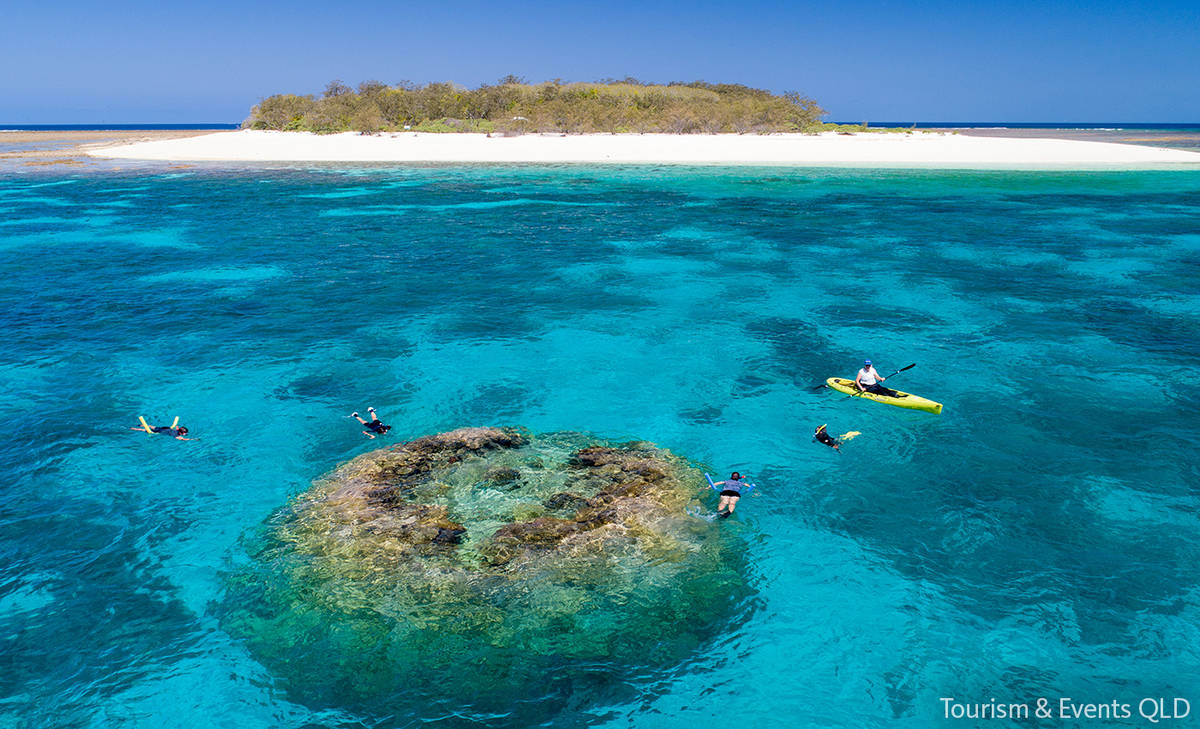You don’t have to take your passport to go overseas when you’re an Australian and have more than 8,200 islands to choose from. Here are our favourites that make up the best local holiday destinations for the overseas traveller looking to stay at home.
1. LORD HOWE ISLAND
A Subtropical Paradise

Just an hour from Sydney, Lord Howe is a world heritage site with endemic clownfish and the southern-most barrier reef in the world. It’s like a mini-Galapagos, home to a rare flightless rail, millions of seabirds and an extraordinary stick-insect or ’land lobster’ thought extinct until the rediscovery in 2001. Ride your bike on quiet streets to secluded beaches, enjoy a BBQ of fresh-caught seafood in the shadow of Mt Gower and for the adventurous, take a walk to its summit, dripping with lush verdant rainforest. Lord Howe is popular in the tourist season (for those who know) and early planning is essential.
TAKE ME THERE!
2. NORFOLK ISLAND
a World Heritage listed living history

Norfolk Island is home to the southern hemisphere’s best collection of restored convict-built Georgian buildings and structures still in community use today. Only 30 square kilometres, it's packed full of beauty and blessed with a wonderful subtropical climate where the great outdoors is yours to enjoy. Go bush walking, sea kayaking, surfing or diving/snorkeling. In the evening, you’ll succumb to the unique Norfolk progressive dining, where you go from house to house for different dinner courses and learning local family stories.
TAKE ME THERE!
3. COCOS KEELING
the quintessential paradise island

This chain of 27 islands offer the quintessential tropical holiday destination ex Perth. The island was strategically important as a communications hub during both world wars and its museum lays testament to the infamous fight between HMAS Sydney and the German Light Cruiser Emden. Today the island lagoon is still home to tens of thousands of turtles. There are plenty of beaches to explore either on foot, bike, scooter or with a hire vehicle. Home Island, which is home to the Cocos Malay community and the seat of the Clunies-Ross dynasty, Oceania House, is regularly serviced with a ferry across the lagoon.
TAKE ME THERE!
4. CHRISTMAS ISLAND
where wildlife abounds

Christmas Island is a world-famous Australian outpost in the Indian Ocean surrounded by jagged cliffs, punctuated by coral beaches, feeding on to tropical reefs teeming with marine life. Most famous for its 90+ species of crabs, like the Christmas Island Red Crab and the Robber Crab, the bird life on Christmas Island cannot be missed either. Birds are everywhere – all the time! Christmas Island boasts one of the most beautiful birds on the planet – the golden morph of the White-tailed Tropicbird, or Golden Bosun. Their mesmerising aerial acrobatics and distinctive call can be heard all around the island.
TAKE ME THERE!
5. TIWI ISLANDS
Remote luxury and Indigenous culture

Until very recently, there were few places to stay on the Tiwi Islands, that is until Nat Geo Explore the Wild newcomer and croc-wrangler Matt Wright reinvigorated the Island Retreat. The locals are famous for their traditional lifestyle, stunning artworks, vibrant fabrics and textiles, plus an exuberant passion for Aussie rules football! Food, fishing, Indigenous art, other cultural experiences and incredible sunsets greet any visitor after a forty-minute flight from Darwin. For the less budget-conscious, there are helicopter flights to remote swimming holes and the ultimate VVIP experience, is to hire Matt himself as a private guide.
TAKE ME THERE!
6. KANGAROO ISLAND
An ark for endangered Australian animals

A third of Kangaroo Island’s land is conservation reserve and its kangaroos and goannas are found nowhere else on Earth, with the chance to travel and meet world-renowned researchers or even shadow scientists working on the recovery of endangered animals like the Kangaroo Island Dunnart. Ten percent of the island’s human population have been known to turn up to do tree planting and this population, fewer than 5,000, make a vibrant creative scene where homes, restaurants and public buildings are like art galleries. There’s also an excellent array of local produce including beef, lamb, eggs, wild-catch and aquaculture fisheries, honey, figs, wine and gin.
TAKE ME THERE!
7. FLINDERS ISLAND
A rare mountains in the sea experience

One of 52 islands that make up the Furneaux group in Bass Strait, Flinders is reached by light aircraft from Melbourne. The island is as spectacularly wild and rugged as the people are warm and welcoming. There are sparkling beaches, abundant wildlife and clear sapphire waters. Jagged mountains jut from the wild ocean that delivers some of Australia’s finest crayfish, charming rural homestays and activities to enjoy all year round, from walking, fishing and birdwatching to combing miles of deserted beaches and fossicking for sea shells and precious gems.
TAKE ME THERE!
8. LADY ELLIOT ISLAND
extraordinary reef wildlife sanctuary

Lady Elliot Island is a coral cay located at the southern tip of the Great Barrier Reef. The island can only be reached by air from nearby coastal towns and the lease is held by a local family and conservationists, who have turned it into a haven for wildlife. Within the highly protected ‘Green Zone’ the coral cay is a sanctuary for over 1,200 species of marine life and known, in particular, for its abundance of manta rays, as well as year-round turtles. Trained reef guides are on hand all the time to show you what’s happening in nature’s calendar and both snorkelers and divers are accommodated.
TAKE ME THERE!
9. WILSON ISLAND
Private off-grid reef hideaway

This private island escape is accessed either by air or ferry via Heron Island from nearby Gladstone. Wilson is an exclusive destination suited to either independent travellers (maximum of 18 guests are allowed on the island) or booked exclusively for a group. At a surprisingly affordable rate, it’s the perfect chance to have an entire barrier reef island to yourself but is strictly limited to adults and children over the age of 16. Accommodation is glamping safari tent-style, nestled among the Pisonia trees with communal al fresco dining and private chef.
TAKE ME THERE!
10. TASMANIA
The apple isle

Australia’s biggest island deserves a big mention. This subantarctic island is festooned with unique experiences, incredible food and amazing wildlife. It’s even got its own islands like Maria and Bruny, both deserved of individual mention. Imagine a day learning to fly-fish, discovering gourmet food, then sailing a wooden tall ship before visiting a contemporary art gallery New Yorkers talk about. Watch Tasmanian Devils in their natural habitat from the window of a log cabin deep in the forest and a different side of Hobart by cycling one of the city’s trails, or joining a group to kayak around the historic Constitution Dock. Flying into the world’s most remote forest, watch soaring albatrosses, journeying by steam train along mountain passes are all days out in Tasmania. Take some advice before you visit though, as there is a lot more to miss out on than there is to see.